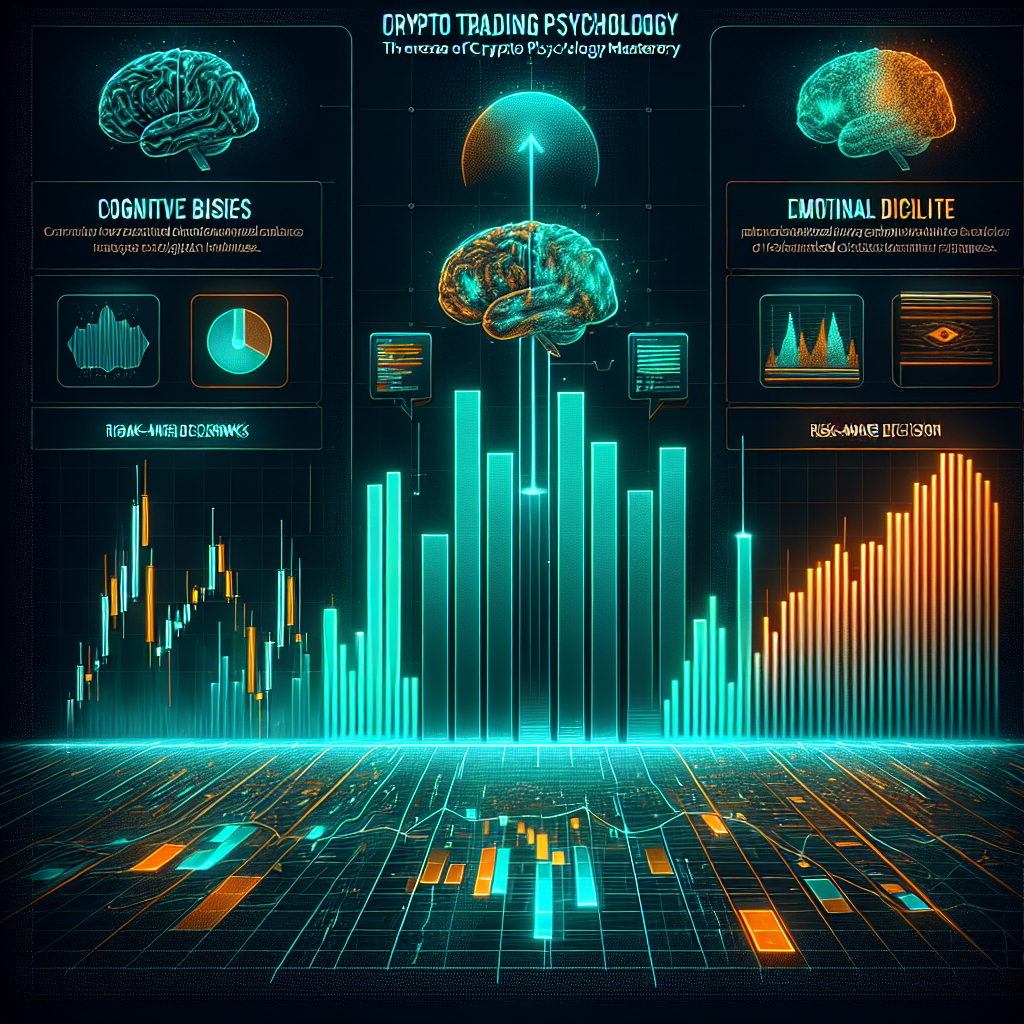Crypto Trading Psychology Mastery: Cognitive Biases, Emotional Discipline, and Risk-Aware Decision Frameworks

Introduction: Why Psychology Outweighs Technology in Crypto Trading
High-frequency bots, lightning-fast exchanges, and real-time analytics dominate the cryptocurrency landscape, yet the invisible driver of every trade remains the human mind. Whether you scalp on centralized exchanges or dollar-cost average into decentralized tokens, mastering crypto trading psychology can be the difference between consistent profits and catastrophic losses. This article explores three pillars—cognitive biases, emotional discipline, and risk-aware decision frameworks—that form a holistic approach to psychological mastery in the volatile world of digital assets.
Cognitive Biases: Hidden Filters Distorting Your Market View
Cognitive biases are systematic errors in thinking that color how traders interpret price action, news, and social media chatter. By identifying and neutralizing these mental shortcuts, you can process information more objectively and align your strategies with real market probabilities.
Anchoring Bias: The Sticky First Impression
Traders often fixate on a coin’s initial listing price or an all-time high, subconsciously judging future valuations against that irrelevant anchor. Combat this by recalibrating reference points using fresh technical levels such as current support, resistance, and on-chain metrics.
Confirmation Bias: Echo Chambers of Thought
Crypto Twitter, Telegram groups, and Reddit threads can trap you in a feedback loop that reinforces pre-existing beliefs. To break free, deliberately seek disconfirming evidence—bearish charts, regulatory risks, or macroeconomic headwinds—before entering or exiting a position.
FOMO & Availability Heuristic
When headlines scream 10x gains and friends flaunt memecoin profits, recent success stories feel more probable than they are. Counteract by comparing current setups with historical samples of similar market conditions and assessing statistical win rates rather than sensational anecdotes.
Overconfidence & the Illusion of Control
A string of winning trades can trick you into believing you possess unrivaled market insight. Maintain humility by tracking your hit rate and risk-adjusted returns in a trading journal, ensuring data—not ego—drives your size and strategy.
Emotional Discipline: Turning Volatility Into Opportunity Instead of Anxiety
Volatility evokes fear and greed in equal measure, tempting traders to deviate from their plan. Emotional discipline creates the mental resilience needed to follow through on setups and avoid impulsive decisions.
Pre-Trade Rituals to Anchor Focus
Implement a simple routine—review market conditions, check economic calendars, and confirm your psychological state—before placing any order. Rituals act like circuit breakers, slowing reactions and improving decision quality.
Mindfulness & Stress Management Techniques
Deep-breathing exercises, brief meditation sessions, or even a quick walk can reduce cortisol levels, sharpening analytical faculties. Schedule these micro-breaks alongside regular chart reviews to maintain clarity during extended trading sessions.
Journaling: The Mirror That Never Lies
Document entry rationale, emotional states, and exit outcomes in a detailed trading journal. Over time, patterns emerge—perhaps you force trades after reading bullish news or hesitate during market dumps. Recognizing these triggers empowers corrective action.
Accountability Mechanisms
Share your plan with a trusted peer or mentor, or use automated tools that lock position sizing beyond predefined limits. External checks reinforce internal resolve, making it harder to override your rules in the heat of the moment.
Risk-Aware Decision Frameworks: Systematizing Safety and Profit
Even perfect psychology falters without a rules-based risk framework. Building a robust architecture for trade selection, position sizing, and exit management safeguards capital and ensures longevity.
Position Sizing Algorithms
Adopt mathematical models such as the Kelly Criterion, fixed-fractional sizing, or volatility-adjusted units to align stake sizes with portfolio risk tolerance. This prevents single trades from wiping out weeks of gains.
Risk-Reward Ratios & Expected Value
Require each setup to offer a minimum reward that is at least twice its risk (2:1) and positive expected value based on historical win rates. By filtering trades through this lens, you focus energy on high-quality opportunities.
Scenario Analysis & Contingency Planning
Map bullish, neutral, and bearish outcomes before entering a trade. Define exact triggers for stop-losses, trailing stops, and profit-taking levels. Pre-planning prevents emotional paralysis when swift market moves happen.
Diversification Across Correlated Clusters
Crypto assets often move in tandem, especially during market-wide risk-on or risk-off phases. Diversify not just by token but by sector, consensus mechanism, and utility case to mitigate systemic shocks.
Integrating the Three Pillars: A Practical Checklist
- Identify the primary cognitive bias that influenced your last trade and outline one corrective tactic.
- Perform a two-minute breathing exercise before each trading session to establish emotional equilibrium.
- Calculate optimal position size with a fixed-fractional rule (e.g., risk 1% of total equity per trade).
- Log every trade in a journal, tagging emotions and market context for future review.
- Review performance weekly, adjusting biases, discipline techniques, and risk parameters as needed.
Conclusion: Continuous Optimization Equals Sustainable Profits
In crypto markets where the only constant is change, psychological mastery is not a destination but an iterative process. By shining light on cognitive biases, fortifying emotional discipline, and executing through risk-aware frameworks, you stack probability in your favor. Commit to continuous self-assessment and refinement, and you will transform volatility from a foe into a formidable ally on your journey to trading excellence.